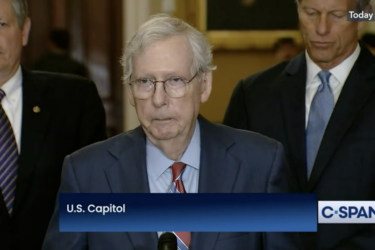 AHCJ hosted a webcast about the CMS data, featuring several CMS officials and Charles Ornstein, a senior reporter at ProPublica and member of AHCJ’s board of directors.
AHCJ hosted a webcast about the CMS data, featuring several CMS officials and Charles Ornstein, a senior reporter at ProPublica and member of AHCJ’s board of directors.The federal government is expected Wednesday to release data on the services provided by – and money paid to – 880,000 health professionals who take care of patients in the Medicare Part B program. For 35 years, this data has been off limits to the public – and now it will be publicly available for use by journalists, researchers and others.
While the data offers a huge array of stories, which could take weeks or months to report out, it also has some pitfalls. Here are six things to be aware of before you dig in:
Have a strategy for storing and opening the data. This data set is big. About 10 million rows, from what I hear. Because of that, you won’t be able to analyze it in Microsoft Excel and you might not be able to open it in Microsoft Access. You’ll want to upload it onto a data server and analyze it in a more powerful program such as SQL or SPSS. This could well serve as a barrier to entry for smaller news organizations. You may want to partner with an academic institution or another news outlet to analyze the data.
Know what the data covers – and what it doesn’t. This data covers services and treatments provided by doctors and other health professionals who treated the 33 million beneficiaries in Medicare Part B in 2012. It doesn’t include expenses incurred by the 13.6 million people in Medicare Advantage plans (managed-care plans) in 2012 nor does it include any private insurance costs/payments. Moreover, this data doesn’t cover payments for inpatient hospitalizations, skilled rehabilitation, durable medical equipment or prescription drugs. Finally, the data is redacted to exclude any services provided to fewer than 11 patients.
There are many reasons why a doctor may receive large payments from Medicare. For one, the doctor may treat exclusively Medicare patients. In such cases, the doctor’s payments would naturally look larger compared to peers who also see a lot of privately insured patients (this is called a provider’s payer mix). Another explanation is that the doctor may provide services, such as eye surgery or cancer care, that are reimbursed at higher rates than typical office visits. A third explanation is that the provider may have other professionals billing under his/her Medicare number, which is allowed in some circumstances. Of course, there may be other reasons that raise questions of fraud, but don’t just assume that because a number is large, a doctor has done something wrong.
Quantity and quality are not the same. Studies have shown that doctors who perform a lot of surgeries generally have better outcomes than those who perform fewer procedures. But because of the payer mix problem mentioned in the last paragraph, you won’t necessarily know from the Medicare data alone how many procedures a doctor performs across his practice. As health care data expert Fred Trotter notes, a surgeon who has “low volume” in this data might be actually be doing the procedure a lot, but just for commercial payers primarily.
Not everyone can be compared head to head. It doesn’t make sense to compare the billings/services provided by a neurologist to those of a primary-care doctor. Similarly, you shouldn’t compare a radiologist and a dermatologist. Each specialty does different procedures. Likewise, the practice patterns in states can differ. If you do decide to compare physicians, make sure your pairings make sense.
Medicare coding and billing is complex. Take the time to familiarize yourself with the way that Medicare pays for services. The data being released by Medicare involves some 6,000 billing codes, some of which seem almost identical. Understand the difference between them. Make friends with medical coders. Medicare also has a series of adjustments to the data that take into account where the service is being performed (hospital vs. office), geographic differences in costs between regions, etc.
So, given these caveats, what should you look at? What has worked well for us at ProPublica is to explore differences in doctors based on proportions. In the case of the Medicare prescription drug data ProPublica has been writing about, we’ve looked at the percentage of each doctor’s patients who received narcotics and the overall percentage of brand name drugs vs. generics, among other factors.
When writing about this data, being right is more important than being first. Take the time to understand the issue before you weigh in. Be sure to explain to readers, viewers and listeners why they should care and how they should integrate this information in the decisions they make. If you can’t do that, this data may well lack meaning for them.









